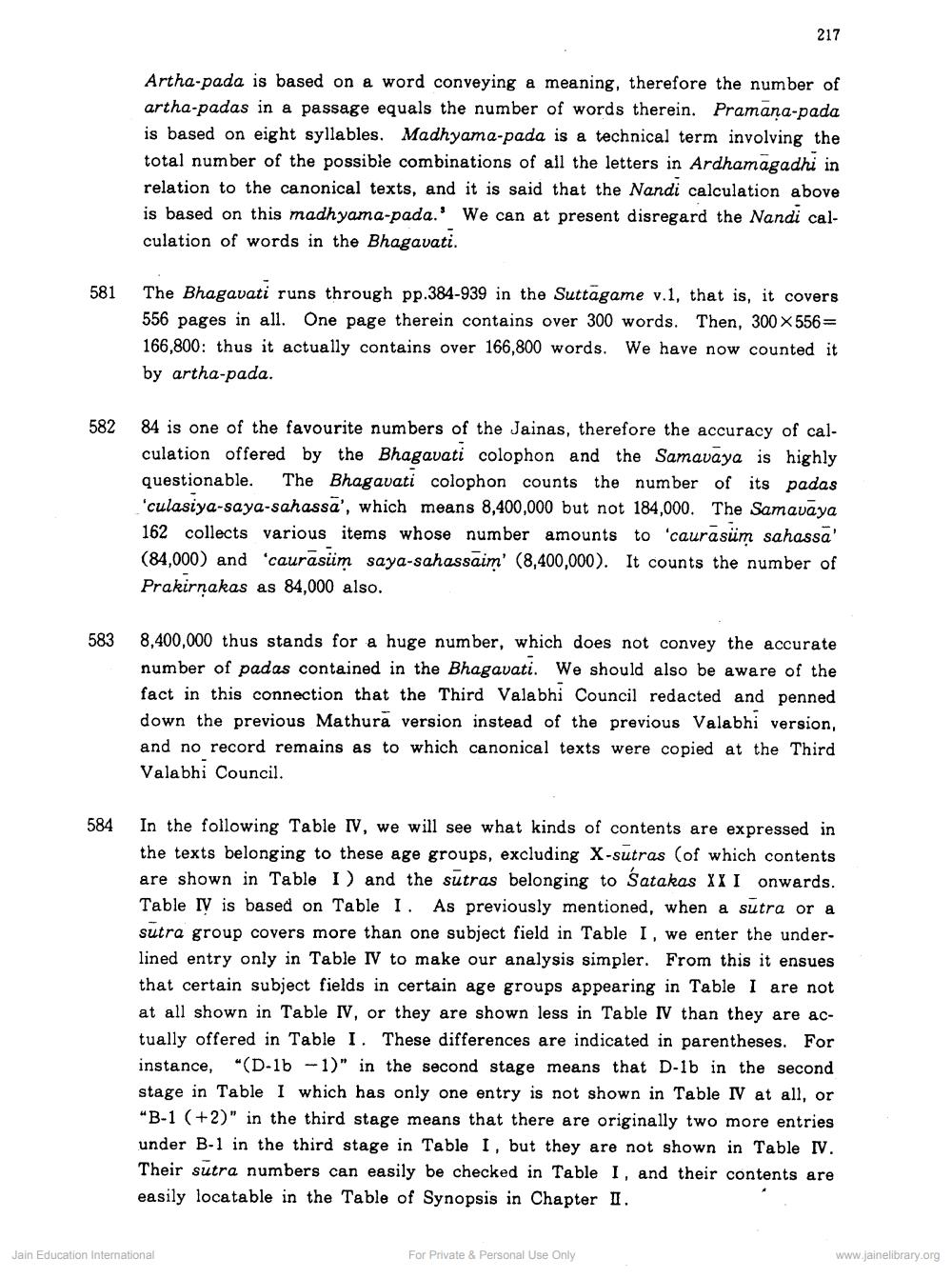________________
217
Artha-pada is based on a word conveying a meaning, therefore the number of artha-padas in a passage equals the number of words therein. Pramana-pada is based on eight syllables. Madhyama-pada is a technical term involving the total number of the possible combinations of all the letters in Ardhamagadhi in relation to the canonical texts, and it is said that the Nandi calculation above is based on this madhyama-pada.' We can at present disregard the Nandi calculation of words in the Bhagavati.
581
The Bhagavati runs through pp.384-939 in the Suttāgame v.1, that is, it covers 556 pages in all. One page therein contains over 300 words. Then, 300 X 556 = 166,800: thus it actually contains over 166,800 words. We have now counted it by artha-pada.
582
84 is one of the favourite numbers of the Jainas, therefore the accuracy of calculation offered by the Bhagavati colophon and the Samavaya is highly questionable. The Bhagavati colophon counts the number of its padas 'culasiya-saya-sahassa', which means 8,400,000 but not 184,000. The Samavaya 162 collects various items whose number amounts to 'caurasüm sahassa' (84,000) and 'caurasiim saya-sahassaim (8,400,000). It counts the number of Prakirnakas as 84,000 also.
583
8,400,000 thus stands for a huge number, which does not convey the accurate number of padas contained in the Bhagavati. We should also be aware of the fact in this connection that the Third Valabhi Council redacted and penned down the previous Mathurā version instead of the previous Valabhi version, and no record remains as to which canonical texts were copied at the Third Valabhi Council.
584
In the following Table I, we will see what kinds of contents are expressed in the texts belonging to these age groups, excluding X-sutras (of which contents are shown in Table I) and the sutras belonging to Satakas XXI onwards. Table IV is based on Table 1. As previously mentioned, when a sutra or a sutra group covers more than one subject field in Table I, we enter the underlined entry only in Table IV to make our analysis simpler. From this it ensues that certain subject fields in certain age groups appearing in Table I are not at all shown in Table IV, or they are shown less in Table IV than they are actually offered in Table I. These differences are indicated in parentheses. For instance, “(D-1b-1)" in the second stage means that D-lb in the second stage in Table I which has only one entry is not shown in Table IV at all, or "B-1 (+2)" in the third stage means that there are originally two more entries under B-1 in the third stage in Table I, but they are not shown in Table I. Their sutra numbers can easily be checked in Table I, and their contents are easily locatable in the Table of Synopsis in Chapter II.
Jain Education International
For Private & Personal Use Only
www.jainelibrary.org




